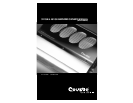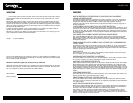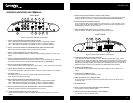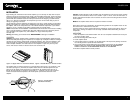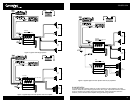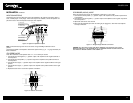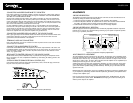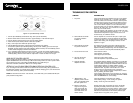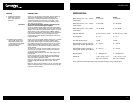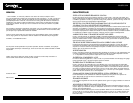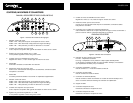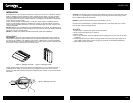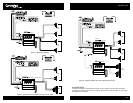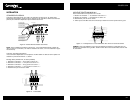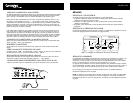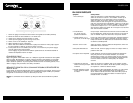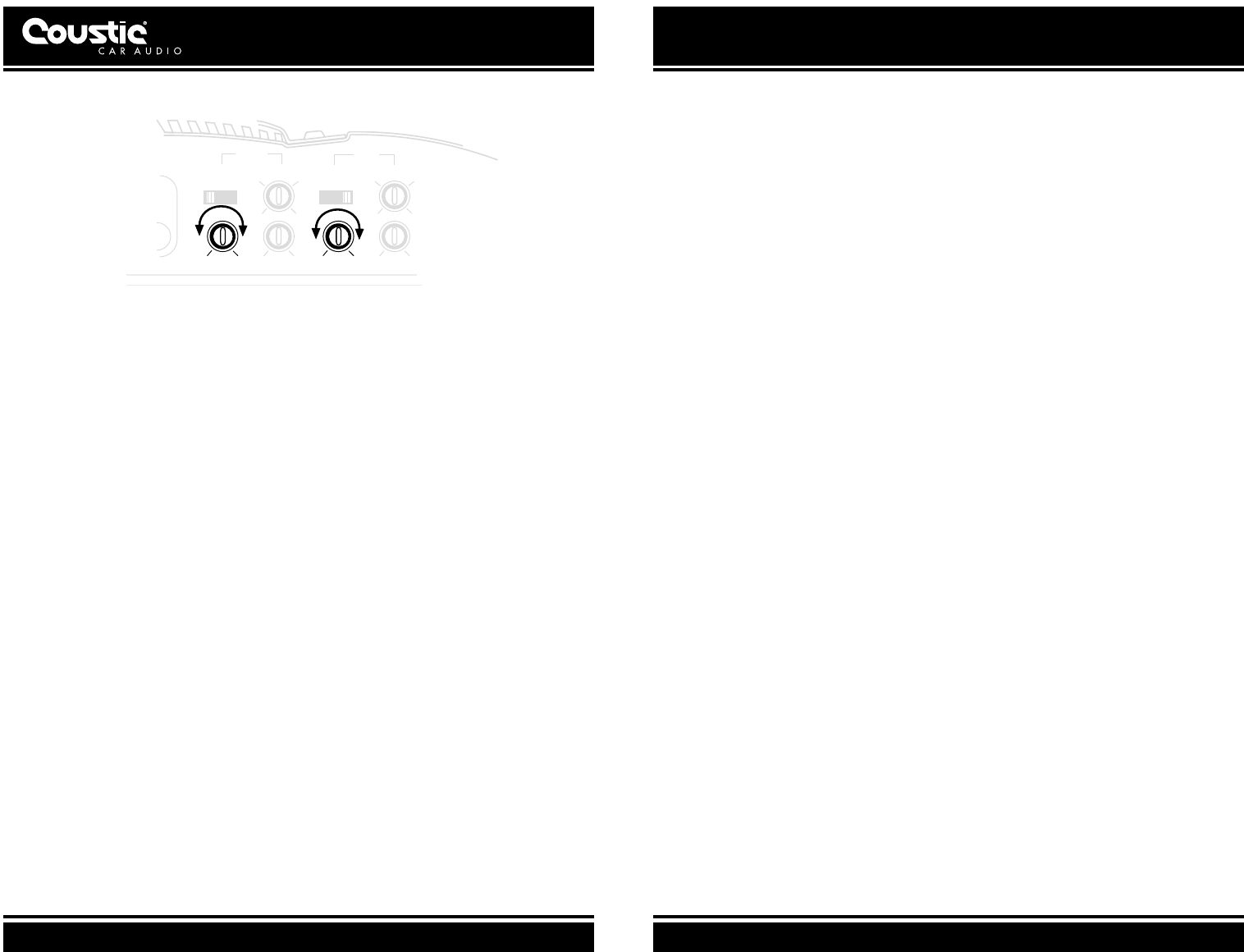
COUSTIC.COM
15
Figure 14: Input Sensitivity Control
1. Turn the Input Sensitivity Control all the way down (counter clockwise).
2. Set the volume control of the source unit to approximately
2
⁄3 of its maximum output.
3. Turn the balance control of the source unit to its center position.
4. Leave the tone (bass/treble) controls at their usual position.
5. Play a CD or tape track with wide dynamic range.
6. Use the Bass Boost Control to enhance the bass performance (if desired).
7. To locate the optimum input sensitivity setting, ask the person assisting you to turn the Input
Sensitivity Control clockwise until audio distortion starts to develop. Turn the sensitivity control
counter clockwise slightly to minimize the distortion.
8. If you constantly switch between CD/tape and radio, you will need further adjustment since
radio output level differs from that of CD or tape. In this case, you need to locate a balanced
sensitivity setting which is best for both the output level of radio and that of CD or tape.
BASS BOOST CONTROL (BOOST)
Select a boost level between 0dB and +18dB to enhance the bass performance for your sound
system. BASS BOOST is NOT free! Every 3dB of boost costs you twice as much in power. Make
sure to set the final gains...after setting the Bass Boost to work best with your
subwoofer/enclosure combination. More is NOT always better!
SETTING UP 481QE USING REMOTE SUBWOOFER GAIN CONTROL (R S)
If you are using the R S control, make sure to take this into account during set-up procedures of
the subwoofer amplifier. You should set the system up with the R S plugged in, and with the level
knob turned all the way down (counter clockwise).
NOTE: the R S ONLY works in the "rear channel", and ONLY when you’ve selected the LPF (low-
pass) crossover configuration.
FRONT
REAR
MODE
HPF OFF LPF
FREQ
30
300
60
180
0
+18
BOOST
MODE
HPF OFF LPF
FREQ
30
300
60
180
0
+18
BOOST
5 volts .1 volt 5 volts
.1 volt
SENS
MIN MAX
SENS
MIN MAX
TROUBLE-SHOOTING SECTION
SYMPTOM PROBABLE CAUSE
1. No power Check connections to the amplifier's Ground, B+ & Remote
terminals. Check connection at "+" terminal of the battery.
Check the remote turn-on terminal. Ensure it receives power
when the source is turned on (or when the switch is turned
on). Refer to the Installation Section. Check the power line
fuse: if fuse is blown, replace it; if fuse continues to blow,
check the power wire and also the amplifier for a short. If the
short is in the power wire, fix it; if the short is in the amplifier
itself, see your Coustic dealer.
Check the voltage at the amplifier, and the remote ON/OFF
lead. The voltage should measure between 11 V - 15 V. If the
measurement is beyond this range, have the source unit
checked out by an authorized dealer.
2. Power without sound with Turn the amplifier off, and Check all input & output signal
red power/protection cables and connections. Check the speakers for short with
indicator on a VOM (volt meter) or by connecting them to another audio
system. After making sure everything is normal, turn the
amplifier on again.
3. Power without sound with The continuous red light of the power indicator signals a
red power indicator on high internal operating temperature, which results in the
amplifier switching off temporarily; when the amplifier cools
down to a safe level, the amp will automatically restart.
4. No sound from one side Check balance control.
Check speaker connections.
Check signal input connection.
5. Very low sound from Check your radio's fader control.
both radio & tape Check the amplifier's Input Sensitivity Level.
6. Frequent automatic This indicates that the amplifier is operating at a continually
amplifier shut down undesirable high internal temperature. High operating tem-
perature caused by inadequate ventilation: Refer to the sub-
section titled LOCATION for better amplifier location.
High operating temperature caused by an excessively low
impedance load, say below 2 ohms stereo or 4 ohms
bridged: Check for bad speakers and/or electronic
crossover, proper passive crossover components; if all else
fails, try rewiring the entire system.
High operating temperature can be caused by an incorrect
input sensitivity level: refer to sub-section titled INPUT SENSI-
TIVITY ADJUSTMENTS for correct setting.
7. "Motorboating": The Check the amplifier's connection to the battery.
amplifier power indicator Check battery voltage. If low, recharge or replace
going off repeatedly when battery. Check all ground connections.
the audio system is on
8. Whining noise when Reroute power cable from battery to source unit directly,
engine is running with bypassing the battery terminal in the fuse box. Check
noise varying with the power connections to be sure they areclean. Check ground
accelerator (noise level connections to be sure the ground wire is in direct contact
varies with source unit with the bare metal surface of the chassis (with that spot
volume control) scraped clean of any paint, rust or grease).



